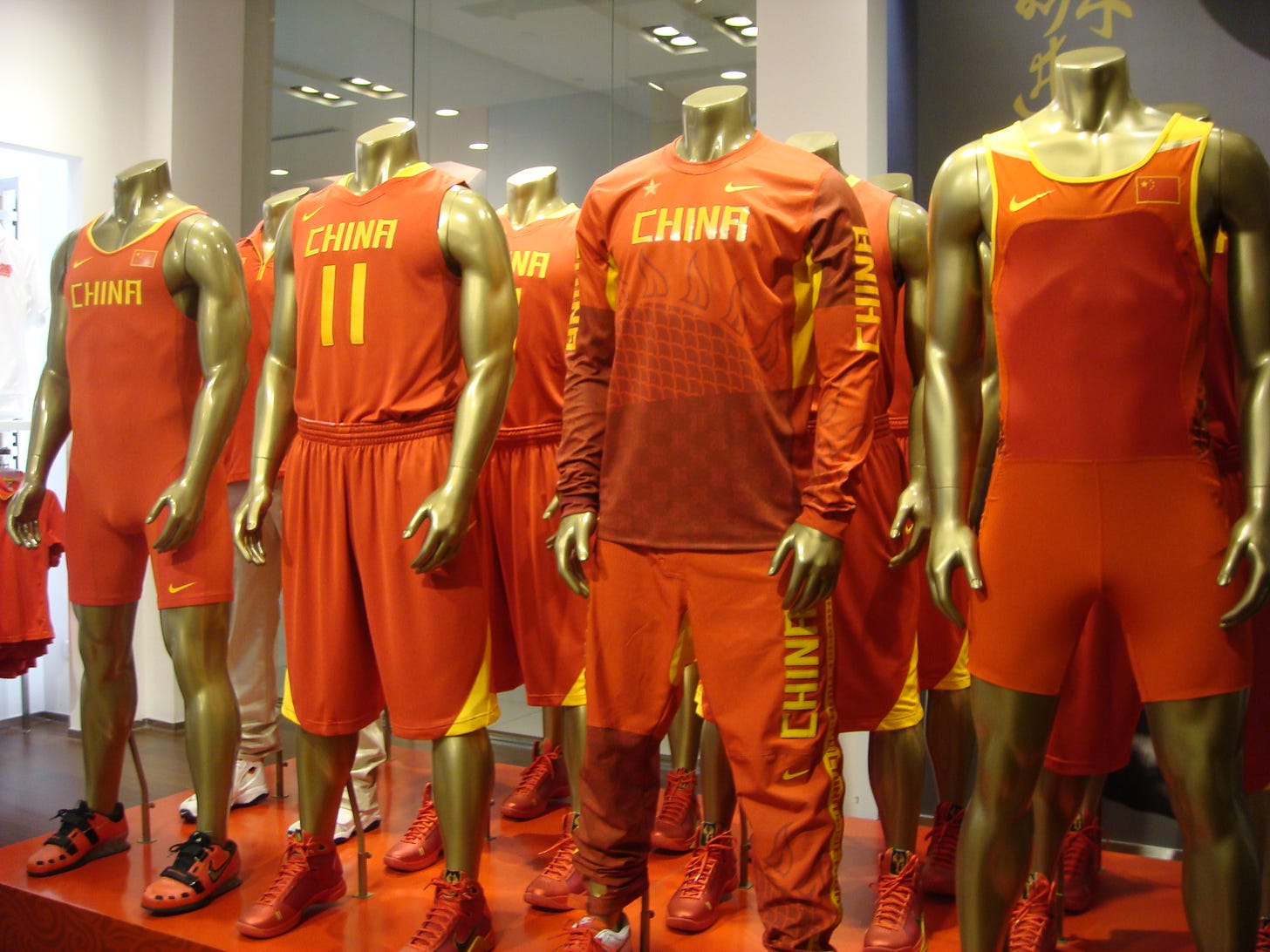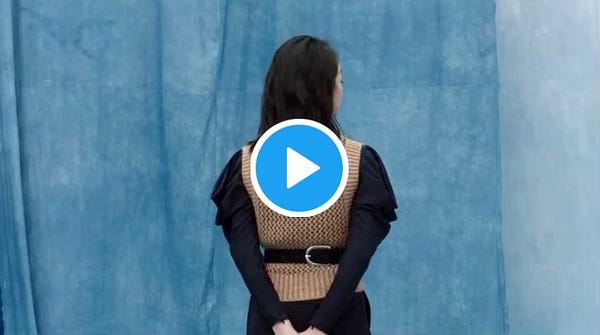Meanwhile in China
H&M carefully repositions its stance on buying cotton from Xinjiang while consumers and companies watch closely
In a rush? No worries! The most important bits are in bold. Skim ahead!
Swedish fashion retailer Hennes & Mauritz released a new statement on Wednesday, days after it became the face of widespread boycotts across China over its stance on sourcing cotton from the western region of Xinjiang. The updated statement released by parent company H&M Group declares the fashion retailer is “working together with [our] colleagues in China to do everything [we] can to manage the current challenges and find a way forward.” The statement is H&M’s latest move in a tricky balancing act between prioritizing human rights and profits.
Last week, Chinese shoppers vanished from H&M stores, and instead packed social media with rallying cries, imploring their fellow citizens to stop supporting the brand. The dramatic reaction was triggered by coordinated sanctions imposed by the West last month, and H&M’s September 2020 announcement that it will no longer source cotton from the Xinjiang region amid growing concerns of forced labor of the region's ethnic Uyghur Muslim population.


The September statement said the company is “deeply concerned by reports from civil society organizations and media that include accusations of forced labor and discrimination of ethno-religious minorities.” Since at least 2016, China’s Uyghurs have systematically been monitored and detained in internment camps, or what the Chinese government calls“re-education camps.” Extensive reporting about the region uncovered China is actively stripping Uyghur people of human rights, including non-consensual sterilizations, separating children from their families, and forcing over a million people into the camps where they must renounce Islam and pledge loyalty to the Chinese Communist Party. Although the Chinese government denies the claims and says news outlets like the BBC and CNN are just making stories up to defame China, satellite images show a massive increase in the construction of detention centers in recent years, and Uyghur escapees have corroborated many reports.


China’s actions have alarmed people, human rights groups, and governments across the world, with the U.S. Congress saying China is committing “crimes against humanity and possibly genocide.” On March 22, the U.S., U.K., E.U., and Canada launched sanctions on senior officials in Xinjiang. Angered by the West’s “political manipulation on Xinjiang-related issues,” the Chinese people launched sanctions of their own against Western clothing companies, like H&M. Nike, Burberry, Adidas, and Converse are among some of the other brands facing backlash over similar statements regarding forced labor in Xinjiang.
By March 25, Chinese state media was calling on citizens to boycott H&M, and the sentiment spread quickly via social media. On Weibo, a popular microblogging site, the influential, government-affiliated Communist Youth League delivered a message encapsulating the betrayal that Chinese people felt: “Want to make money in China while spreading false rumors and boycotting Xinjiang cotton? Wishful thinking!” Weibo saw more than 4 billion views for the hashtag “I support Xinjiang cotton.” Chinese e-commerce platforms, like Alibaba and JD.com, promptly removed H&M’s merchandise from their sites and Burberry’s collaboration with the video game Honor of Kings ended, as parent company Tencent removed the designer’s “skins,” for the game's characters. Several Chinese influencers and celebrities like singer Jackson Wang and actress Victoria Song, terminated partnerships and cut ties with the brands stating, “national interests are above all else.”
Nationalism, propaganda, and a history of discrimination
This uproar is not about Chinese people supporting the government’s treatment of Uyghurs, but rather, the result of a carefully maintained firewall, omnipresent propaganda, and a nationalistic educational framework. After the Tiananmen Square Protest in 1989, the Chinese Communist Party implemented a patriotic education campaign which cultivated a sense of wounded national pride and resentment toward its repressors, particularly Japan and the U.S. Now, in the face of rising tensions with the U.S., Chinese nationalism is at an all-time high, with people hot-bloodily defending their government against Western political and economic forces. This may not have been possible without China’s infamous government censorship. The Great Firewall that the Chinese government has been building since 2005 blocks all outside information, often leaving people no choice but to exclusively consume state-sponsored media. Consequently, many citizens understand the Xinjiang situation as a beneficial government project, wherein Uyghurs are placed in vocational training centers that help “eliminate” religious extremism while elevating regional economic development.


Although the government projects an image of China’s 56 ethnicities living harmoniously, biases between the Han Chinese and Uyghur ethnic groups have existed for decades. Since Uyghur separatists claimed responsibility for attacks in Beijing in the 1990s, Chinese media has portrayed Xinjiang as the hub for extremism. In 1996, China launched the “Strike Hard” campaign to address crime and state-perceived terrorism in Xinjiang, leading to the execution of over 1,000 Uyghurs over a two-month span. Meanwhile, tensions between the ethnic groups burst in July 2009, resulting in the Urumqi riots, pitting Uyghurs against Han Chinese on the streets of Xinjiang's capital. The government responded with brute military force and crackdowns. The incident is recognized as the turning point that led to today’s situation.
Can fashion retailers have it all?
With these factors at play, H&M’s September statement felt like a stab in the Chinese consumer’s back. As state broadcaster CCTV accused, these foreign brands are “earning big profits in China but attacking the country with lies at the same time.” In this case, the media sees the Better Cotton Initiative (BCI), a Geneva-based ethical trade group, as the culprit. BCI decided to suspend licensing cotton in Xinjiang in March 2020, effectively barring its 2,000 plus members, including H&M and Nike, from sourcing raw material from the region. State media publications like China Daily, claim the independent organization “played a key role in transforming the will of its major funder, the US government (USAID), into an organized action by big-name companies,” because “China's development in the cotton field is threatening the U.S.'s international pricing power.”
For global brands, this saga creates a turning point for the fashion industry: should a brand appease Western customers and risk losing China, or vice versa? Unfortunately for the brands, ethics is not the only thing at stake. H&M is the world’s second-largest fashion retailer by sales, and China is its fourth-biggest market. Xinjiang supplies ⅕ of the world’s cotton and nearly 90% of China’s cotton annually. In January 2021, the U.S. banned the import of all cotton from Xinjiang, disrupting the fashion industry’s supply chains as companies scrambled to trace its product’s origin. Beyond finding equally inexpensive alternative cotton sources, H&M faces increasing pressure from Western consumers to guarantee workers rights and sustainable production. Moreover, independent U.N human rights experts are urging companies to “scrutinize their supply chains,” following the same forced labor concerns.
Wednesday’s response appears to indicate that H&M is not willing to give up its Chinese market just yet. The statement, which had no mention of Xinjiang or the Uyghur people, reiterated that the Chinese market and the company’s “long-term commitment to the country remains strong.” The statement said China is “at the forefront of innovation and technology,” and H&M is “proud [our] suppliers are being part of that development.” It will continue to work with partners and stakeholders to “responsibly” and “sustainably” move forward. H&M also released a statement on Weibo, declaring, “[This] does not represent any political position...H&M Group always respects Chinese consumers,” and maintains high standards and transparency in its global supply chain.
This is not the first time western brands have stumbled into controversy. Dolce & Gabbana, Versace, and Balenciaga were once in hot water for racist statements and listing Taiwan as a country. But as Zuzanna Pusz, an analyst at UBS, explained to the Financial Times, ‘this boycott was more serious than past crises as the brands have “been caught up in something that’s political. If a brand makes a mistake in terms of its communications or the choice of an influencer, it can apologize and make things right. Here, by trying to make things right, they would actually make things wrong,” she said, referring to the BCI’s guidance on cotton sourcing.
Nike and Adidas were able to continue their sponsorship deals with Chinese sports teams despite the boycott as both companies advertising dollars "are very big for Chinese sports," said James McGregor, chairman of consulting firm APCO Worldwide's Greater China division, to CNN. "There's Chinese organizations that are very dependent on money from Nike and Adidas and the other sports brands, whereas H&M is just a retailer selling into the market."

But for other companies, the ordeal was a serious warning. Zara’s parent company, Inditex, quietly retracted statements about the company’s “zero-tolerance policy for forced labor,” in Xinjiang. Calvin Klein and VF Corporation which owns The North Face brand removed statements about their opposition to forced labor in Xinjiang but told the Financial Times their stance had not changed.
That’s it for this week’s edition of Meanwhile In! If you have any feedback or comments about today’s format please let me know- just hit reply to this email.
Special thank you to Simin Ma for sharing her insight and writing this piece with me! Simin is a researcher, journalist, and photographer originally from China, currently based in Washington D.C. You can find her work here.
For more information and updates on these stories, follow us on Instagram!








